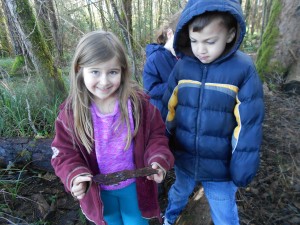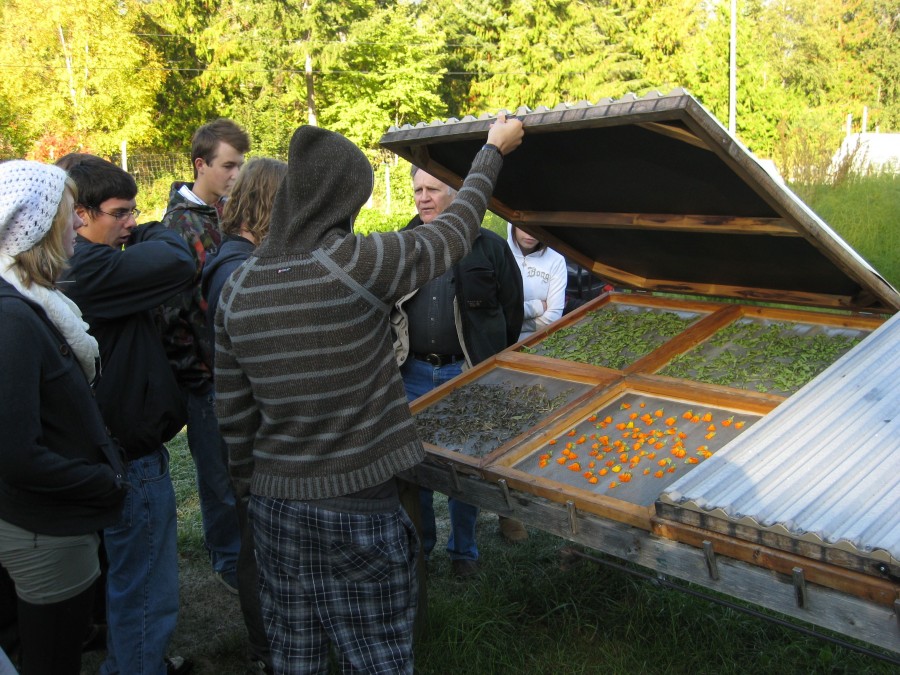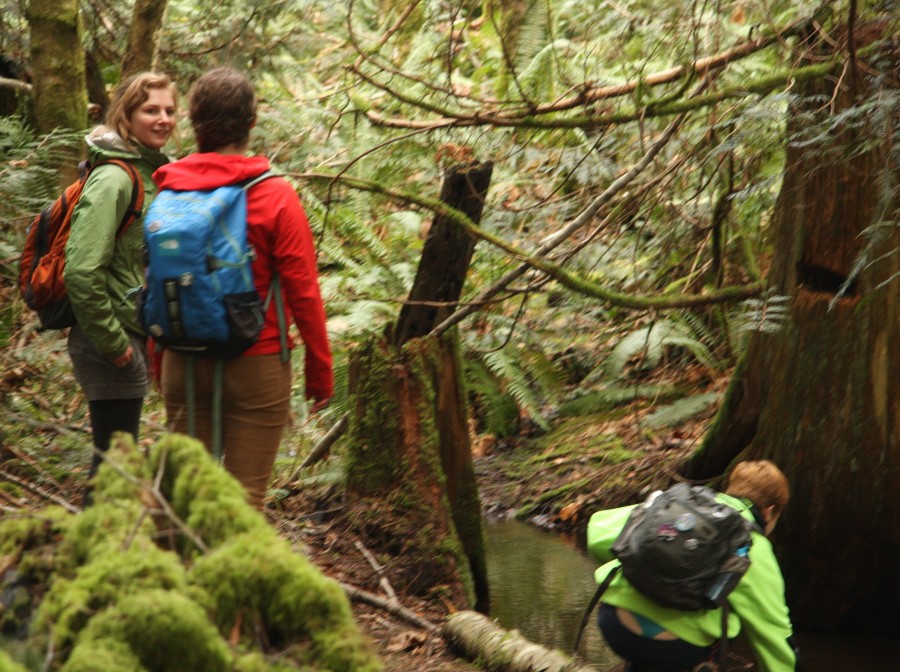Wild Harvesting and Traditional Ecological Knowledge

Originally appears in the Winter 2013-2014 issue
The resources and beauty of nature are shared amongst all of us on this planet. What we take from nature not only impacts our ability to return for more, but is also tied to the survival of other organisms sharing those resources. Berries, mushrooms, flowers and roots are examples of wild products we can sustainably harvest to support human life. But nature can provide more than just products; nature’s diverse landscapes, plants, and animals inspire many stories, legends, practices, and skills. Learning to appreciate nature, while also sharing its resources and building cultural narratives, can be a rewarding experience for all learners, young and old.
Indigenous peoples (i.e. Native Americans) across North America have wisdom and knowledge that comes from many generations of living within the complexity of their local ecosystems. Transmitted from one generation to the next through stories, songs, legends, and practices, Traditional Ecological Knowledge (TEK) influences skills, culture, connection to place, and the ability to provide basic necessities. Nature is in constant flux and as a result, the way that people relate to nature is also constantly changing. Sustainable harvesting is an active way in which everyone can engage with nature. Drawing from traditional knowledge and practices, wild harvesting provides us with an opportunity to learn from cultures and nature simultaneously.
Many organisms – plants, animals, fungi – are the focus of the stories we hear. The Ojibway People of eastern Canada folded cattail leaves to make simple toys; big sagebrush leaves are used in medicinal teas by indigenous peoples of the Great Basin, while the bark can make ropes and baskets; butternut root was used in the Civil War as a way to make the dye for confederate soldiers’ uniforms. Cattail of the Atlantic Northeast provides shoots for food, pollen for medicine, and leaf fibres to make string. It is also a plant species that helps remove pollutants from marshes and wetlands. The western red cedar tree in the Pacific Northwest provides bark for hats and baskets, and timber for forest shelters. Cedar has been called the tree of life by Indigenous peoples of the western coast. Each of these stories adds to our knowledge of the complexity in ecosystems, adding layers of wisdom to our relationship with nature.
The resourcefulness of humans and our ability to appreciate nature’s complexity can provide awe and wonder for learners. Providing learners with wild harvesting opportunities can widen their relationship with nature.
One could start by asking some essential questions: What types of plants did our ancestors collect and use? How do people use these plants now? How can they be used in a sustainable way to strengthen our community?
This approach for understanding human-nature interconnectedness is enriched with Indigenous peoples’ perspectives and knowledge. The activities presented below assist grade 4-7 educators with delivering this inquiry through TEK. Learners will benefit from the sequential delivery of all three activities, although each activity can be taught on its own. Extensions to these activities would enable them to engage students in grades 9-12.
Geographical Adaptations
The activities below are taken from the Going Wild! Guidebook and were designed using TEK from the First Nations communities of coastal British Columbia. For those living in other geographical regions, use the links at the end of this article to find lists of plant species in your region. Although these regions are quite broad across North America, they can be used as a guide to help teachers adapt lesson plans that reflect local ecosystems and cultures of relevance to them.
Prepare a Species Backgrounder with information obtained from one of these sites or from field guides or other sources. This will help you consider the ecological, historical and cultural contexts in which each species can be presented. Each year, add to the Backgrounder new information that is gathered as part of the activities below.
Before You Start
The concepts of interconnectedness, wild harvesting, and traditional techniques require research and preparation. Each plant or wild product you learn about may have multiple uses and origin stories, and be connected to valuable ecological processes. Work towards answering questions such as: How do other organisms connect to the plant or product you are focusing on? How has the plant or product been used by Indigenous peoples, past and present?
If you do not already know, learn about the First Peoples who call home the land you live on. How do they refer to themselves? A good place to start would be to investigate Indigenous influences present in your community. Are there names of towns, cities, and places of interest that reflect the First Peoples? For example, Mississauga (Ontario) – is named after the Mississauga people who live in the area, and describes the mouth of a river. Michi or missi means “many,” and saki, “outlet” a river having several outlets. There are also numerous states, cities and towns in the US that come from the Algonquian language group of native peoples. The word Connecticut is derived from the Algonquian word quinatucquet: meaning “upon the long river.” Once you have done some preliminary investigation it is helpful to ask more specific questions, such as: how do local Indigenous people refer to the plant or product in their language? Are there any members of Indigenous communities that are willing and able to assist you? If none are available to easily visit your classroom, you might like to try and find someone with anthropological expertise. There may be resources in your community that can help, such as an aboriginal friendship centre.
It is also important that you locate a safe, accessible, and acceptable place to harvest the plant/s you wish to use for the activities. Asking local Indigenous and environmental organizations will enable you to learn about appropriate locations in your area.
Finally, when working with traditional knowledge, it is important to consider the generations of understanding and the spiritual significance that underlies this knowledge. While some traditional knowledge is general and openly shared, some information is sensitive and can only be shared when permission is given.
To view the photo-rich magazine version, click here.
Kieran Dowling is the Education Program Manager with Sierra Club British Columbia. With 15 years of experience as an environmental educator working in Australia, Asia, and now Canada, he has an underlying passion for widening perspectives and appreciative inquiry.
Leave a Reply
You must be logged in to post a comment.












